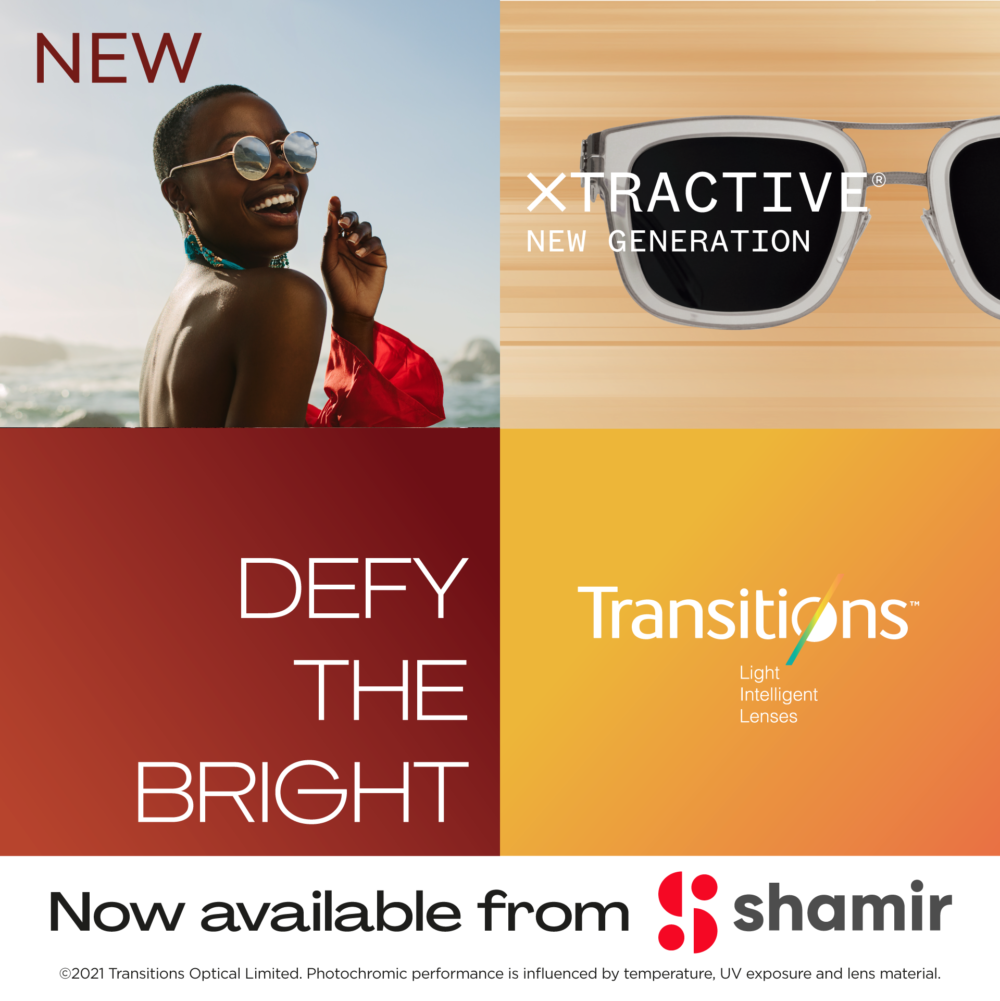
Sunny Side Up 
Spring means sunnier, warmer days. The good news? Many consumers understand more about the importance of wearing quality sunwear than they did even a few years ago.
The not-so-good news? Most still don’t understand why those sunglasses should always be worn outside during the day.
Here are just a few common misunderstandings, along with a few factoids that you may want to share with patients in the office or on social media.
Tip: Because the eyes of children under 10 aren’t yet completely developed, 60% more UV can penetrate their eyes versus those of an adult.
THE MISCONCEPTIONS
• Most people think that the sun’s rays peak midday or in early afternoon. Protection from the sun is still important later in the day, however. In fact, according to the AMC Cancer Research Center, UV exposure is at its peak between 2 p.m. and 4 p.m.
• Taking those sunnies off to play in the pool or, in colder weather, in the snow? Don’t. Water reflects up to 100% of UV, according to the World Health Organization. And snow can reflect nearly as much—up to 85% of UV.
• Think working in a cement jungle of tall buildings negates the need for sunglasses? Think again. The Vision Council reports that concrete can reflect up to 25% of UV.
• Kids may be rough on glasses, but they need protection more than their parents do. The Skin Cancer Foundation states that because the eyes of children under 10 aren’t yet completely developed, 60% more UV can penetrate their eyes than those of an adult.
• Wearing a wide-brimmed hat when hiking in rugged terrain or climbing in the mountains is good, but it’s not enough. Sunglasses are a must, too. Why? As reported by the American Optometric Association, the intensity of UV radiation increases 3% for every 1,312 feet in altitude. At 8,000 feet, for example, UV radiation exposure is almost 20% more than at sea level.
THE SOLUTIONS
So, what can you do to protect your family’s eyes in the summer sun? Here are just a few products designed to do that regardless of the time of year:
• Shamir Blue Zero™ absorbs just the right percentage of blue light and provides UV protection by effectively absorbing harmful UVA and UVB rays. It’s suitable for wearers of prescription or plano lenses.
• Shamir Attitude III™, a sun lens designed to provide maximized visual comfort for sport and outdoor needs. It’s right for any frame—flat or wraparound—and for any activity—from extreme sports to casual wear. There are actually three Shamir Attitude III designs…Single Vision, Fashion, and Sport.
• Transitions XTRActive® New Generation lenses, providing extra darkness and extra light protection.
How do you explain the importance of wearing sunglasses™ in all conditions to your patients? Tell us about it and share in the conversation on Facebook here.

Comments are closed.








